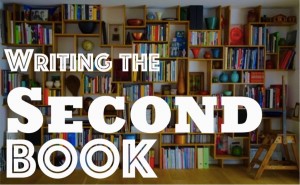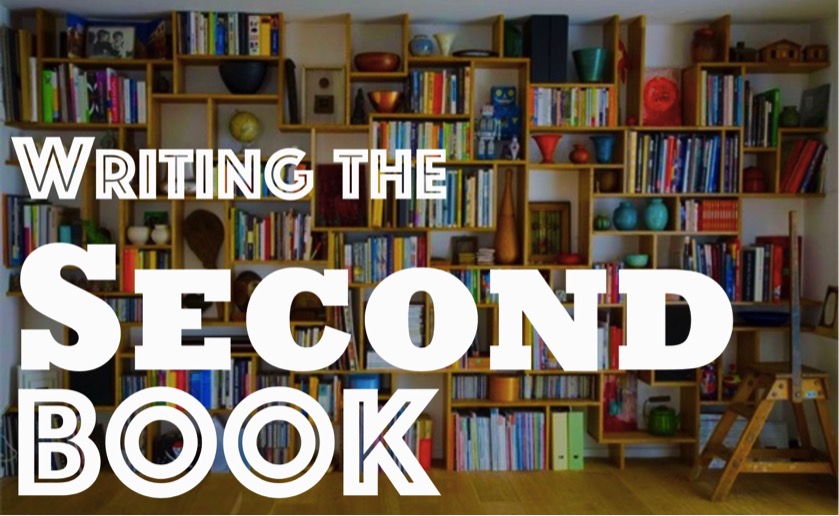 Allan Johnson is Assistant Professor in English Literature at City University of Hong Kong. He is the author of Alan Hollinghurst and the Vitality of Influence (Palgrave Macmillan, 2014) as well as articles and chapters on an array of writers including James, Stoker, Conan Doyle, Shaw, Forster, Woolf, Eliot, Cather, Waugh, Doctorow, and Hollinghurst. You can find ot more about Allan at his website: http://thisisallan.com, and follow him on Twitter @thisisallan. Below is his reflection of writing habits and systems.
Allan Johnson is Assistant Professor in English Literature at City University of Hong Kong. He is the author of Alan Hollinghurst and the Vitality of Influence (Palgrave Macmillan, 2014) as well as articles and chapters on an array of writers including James, Stoker, Conan Doyle, Shaw, Forster, Woolf, Eliot, Cather, Waugh, Doctorow, and Hollinghurst. You can find ot more about Allan at his website: http://thisisallan.com, and follow him on Twitter @thisisallan. Below is his reflection of writing habits and systems.
Over the past two weeks I have been writing about some of the difference between finishing my first book and my second book. My first book began life as my doctoral thesis, and thus much of the writing process was comfortably braced by my supervisor and my fellow PhD candidates, all of whom, even if their topics were completely different to mine, contributed to the sense of camaraderie and research community. Once I began drafting my second book, however, I discovered that not only did I need to begin to think more about project management, but that I needed to think about project management in different ways that I had before. After a year of false starts and failures on the second book, I began to reconsider the management of energy levels in academic writing, and develop some habits and systems to make the best use of my energy rather than just my time.
As I described last week, the differing types of energy required during the drafting and rewriting stages means that I measure progress in these areas in different ways: while drafting I measure progress by words written each week and while rewriting I measure progress by time completed each day. But, of course, assessing progress is only one part of the problem. There is still the matter of scheduling the time that is needed in order to achieve this progress, and over the past three years I have developed several habits and systems that have helped:
- Set goals for number of drafting and/or rewriting sessions you plan to do each week. For the past three years, my stretch goal has always been to spend three hours drafting and three hours rewriting each day, for a total of 30 research hours per week. I have always considered this ideal as something to aspire toward, and rarely have I achieved it. My actual goal is 20 research hours per week, with a mixture of time for drafting and rewriting.
- Set up repeating calendar events for periods of drafting and rewriting, even if these will rescheduled at a later point. When I look at next week’s schedule in iCal during my Weekly Review (more on that in my next post), I will already have two three-hour sessions each day scheduled for drafting and rewriting. Many of these sessions will be moved, shortened, or, sometimes, deleted, but because I have already set these up as repeating calendar events, I receive a constant reminder to keep pushing forward and the amount of work that I should, ideally, be committing to the project. Using repeating calendar events also means that I don’t have to manually add events to my schedule—it becomes just a simple matter of dragging and dropping to where they best fit.
- Front-load the week. Every week is different, with different amounts of time spent in meetings or required for teaching preparation, administrative roles, and other surprise tasks and urgent deadlines. While some things like one’s teaching schedule or a regular weekly committee meeting don’t more around a lot, there is still a great deal of flexibility needed throughout the week. For this reason, I try to schedule as many of my drafting and rewriting sessions early in the week so that if things do come up, these can be pushed back to a later date. Beginning each week with a sprint also means that occasionally I get a free Friday afternoon!
- Use the Note field in a digital calendar to make a note on where to begin tomorrow. Both creative writers and academic writers agree that it is important to end each day of work by making a note of where you left off and what to begin with tomorrow. Turning this into a ritual at the end of the working day can provide a sense of finality to what one has achieved that day, and set up tangible goals for the next day in order to hit the ground running. Rather than making these notes in the document itself, I add it to the Note field in iCal: this gives me access to a snapshot of my progress on any of my devices, and gives me a record of what I managed to accomplish each day.
- Complete a Weekly Review on Friday afternoons and a Monthly review at the end of each month (more on these reviews next week).








Leave a reply